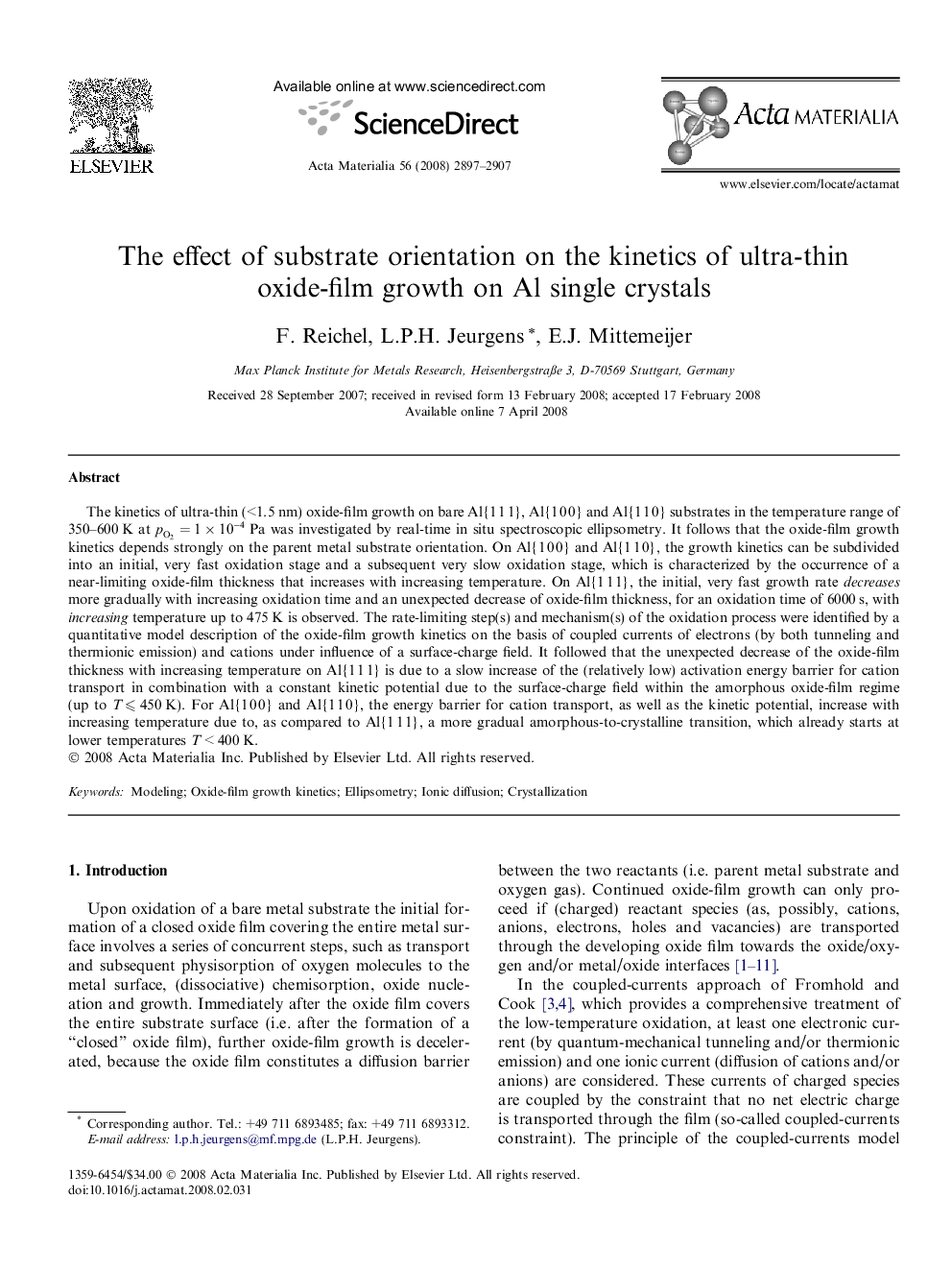| Article ID | Journal | Published Year | Pages | File Type |
|---|---|---|---|---|
| 1450182 | Acta Materialia | 2008 | 11 Pages |
The kinetics of ultra-thin (<1.5 nm) oxide-film growth on bare Al{1 1 1}, Al{1 0 0} and Al{1 1 0} substrates in the temperature range of 350–600 K at pO2=1×10-4Pa was investigated by real-time in situ spectroscopic ellipsometry. It follows that the oxide-film growth kinetics depends strongly on the parent metal substrate orientation. On Al{1 0 0} and Al{1 1 0}, the growth kinetics can be subdivided into an initial, very fast oxidation stage and a subsequent very slow oxidation stage, which is characterized by the occurrence of a near-limiting oxide-film thickness that increases with increasing temperature. On Al{1 1 1}, the initial, very fast growth rate decreases more gradually with increasing oxidation time and an unexpected decrease of oxide-film thickness, for an oxidation time of 6000 s, with increasing temperature up to 475 K is observed. The rate-limiting step(s) and mechanism(s) of the oxidation process were identified by a quantitative model description of the oxide-film growth kinetics on the basis of coupled currents of electrons (by both tunneling and thermionic emission) and cations under influence of a surface-charge field. It followed that the unexpected decrease of the oxide-film thickness with increasing temperature on Al{1 1 1} is due to a slow increase of the (relatively low) activation energy barrier for cation transport in combination with a constant kinetic potential due to the surface-charge field within the amorphous oxide-film regime (up to T ⩽ 450 K). For Al{1 0 0} and Al{1 1 0}, the energy barrier for cation transport, as well as the kinetic potential, increase with increasing temperature due to, as compared to Al{1 1 1}, a more gradual amorphous-to-crystalline transition, which already starts at lower temperatures T < 400 K.
